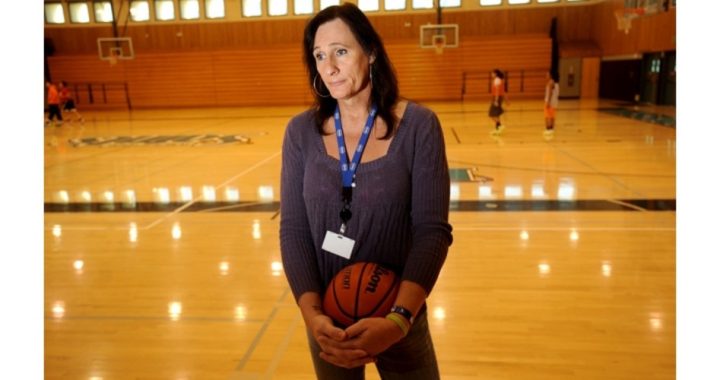
Be careful what you wish for. Feminists once claimed that the sexes were the same except for the superficial physical differences and, therefore, raising them the same would result in complete equality. Now men who’ve changed their superficial differences — having had so-called “gender reassignment surgery” — are competing in women’s sports. But the results are anything but equal.
In fact, they’re often crushing the competition.
Just recently, Laurel Hubbard — a man claiming woman status whose name originally was Gavin Hubbard — won the women’s 198.4-pound division in the Australian International weightlifting championships, besting his nearest rival by almost 45 pounds and “setting new national in the snatch and clean and jerk,” according to 1NewsNow.
As WND.com recently pointed out in a report, there also are other examples (all quotations are WND’s):
• “Transgender cyclist Jillian Bearden, a 36-year-old biological male and Colorado Springs native, won the women’s division of the El Tour de Tucson in four hours and 26 minutes in November 2016.”
• “Transgender football player Christina Ginther, who was born a male and is six feet tall, has sued a semi-pro women’s football team for discrimination and is now playing for another women’s football team.” Now he has his sights set on competing with the women in the 2020 Summer Olympics in Tokyo.
• “Transgender MMA fighter Fallon Fox, born a man, gave his female opponent a concussion and broke her eye socket in 2015.”
• “Gabrielle Ludwig [shown], 50, who was born Robert, joined the women’s basketball team at Mission College in Santa Clara, California, in 2012. Ludwig is 6 feet, 6 inches tall and weighs 220 pounds.”
• “Transgender Catherine McGregor, born a male, is a cricket player on a Canberra, Australia, women’s team. In late 2016, McGregor said he wanted to play in the Women’s Big Bash League.”
• Hannah Mouncey, 26, is a 6’ 2”, 220-pound man claiming woman status. He “was previously captain of a men’s handball team in Canberra, Australia. He played 22 games for the men’s team, including the 2013 World Championships and qualifications for the 2016 Olympic Games.” Now, taking female hormones, he has joined the Australian women’s handball team.
• A 55-year-old man going by the name “Lana Lawless” and claiming womanhood, won the women’s division of the World Long Drive Championship in 2008.
Then there’s 17-year-old “transgender” wrestler “Mack Beggs,” a girl claiming boy status who has been taking high doses of testosterone for a year. Despite taking this performance-enhancing substance — prohibited to the other competitors — Beggs was allowed to compete in a Texas girls’ wrestling tournament.
She won the 110-pound category, finishing her season with a 56-0 record.
By the way, Beggs had wanted to wrestle with the boys. Which the Texas rules wisely prohibit. Nonetheless, the authorities were boneheaded enough to allow her juiced-up self to compete with the girls under an exception allowing the taking of performance-enhancing drugs for “legitimate medical purposes.”
As for the men claiming womanhood (MCW) entering women’s competitions, not all can “dominate,” of course. They generally have had their sex organs removed surgically, which robs their bodies of their muscle-and-power-building testosterone. Moreover, some are quite old when hitting the female ranks. Others simply were low-level athletes highly lacking in skill. What is almost universally true, however, is that they’re taking spots away from female athletes.
What’s amazing is that all this has occurred with little rational discussion of the science behind “transgenderism” and the biological intersex differences influencing athletic performance. In fact, as a tribute to social pressure’s power, you can’t even question the “transgender” agenda without being called a bigot or a hater.
Its proponents apparently are afraid of what honest debate would reveal. As I’ve pointed out time and again, no expert can point to any physiological markers proving that a person is truly “transgender,” that at issue is a biological phenomenon and not a purely psychological one. (For a more in-depth explanation, click here, here, and here.)
Despite this and how new the “transgender” movement is, society’s norms continue to be upended based on smoke-and-mirror pseudo-science. Bathrooms and lockers rooms are opened to the opposite sex, and the standard for athletic organizations now is to allow people to compete based on their chosen “gender” (even though “transgender” activists themselves say there’s a difference between “sex,” a biological distinction, and “gender,” a person’s perception of what he is).
Another factor facilitating the entry of MCW into women’s sports is that people also generally don’t grasp how large the intersex performance gap is. To illustrate the point, the mile record for 15-year-old boys is better than the women’s world record, and an under-15 boys’ soccer team defeated the Australian women’s national team (ranked five worldwide) 7-0 last year.
Some have said the above is irrelevant because MCW’s bodies no longer produce testosterone. This also reflects ignorance. As I wrote a week ago, “Even among young prepubescent boys and girls — who both have the same hormone balance (low estrogen levels) — the boys’ running records are somewhat better, though the gap is quite small at such ages. But this is no surprise: The sexes are not only genetically different, but boys’ bodies produce high levels of testosterone in the womb.”
“Now, if a testosterone-free eight-year-old boy has an advantage, is it logical to assume that a testosterone-free grown man wouldn’t? Note that not only has that man undergone male intrauterine development, but he also has experienced male adolescence.”
Some feminists have complained about the MCW in women’s sports, yet they’re just reaping what they’ve sown. Again, feminists insisted for decades that the sexes were the same except for the superficial physical differences. Why, it was even said that men were only better at sports because they’d had more opportunities and that, once this playing field was leveled, women would catch up.
The result? When I worked with kids, I discovered an 11-year-old boy who was under the impression that the women’s mile world record might be faster than the men’s; another opined that the intersex performance difference in athletics is “very slight.” If people believe such things, why would they trouble over having MCW in women’s sports? And, in fact, an informal survey found that 98 percent of college students don’t.
The lesson is that spreading lies has consequences. But the feminists shouldn’t complain — they got what they wanted.
Of course, if the sexual distinction is irrelevant in the matter, we should just eliminate women’s athletics completely and have the sexes compete together (equality, right?). If a rule separating them in sports is justified, however, then it shouldn’t be violated based on a person’s “self-image.” Do we allow a 230-pound boxer to fight with the lightweights because he “identifies” as a 135-pounder?
Image is not reality — reality is reality.
Photo of Gabrielle Ludwig: AP Images



